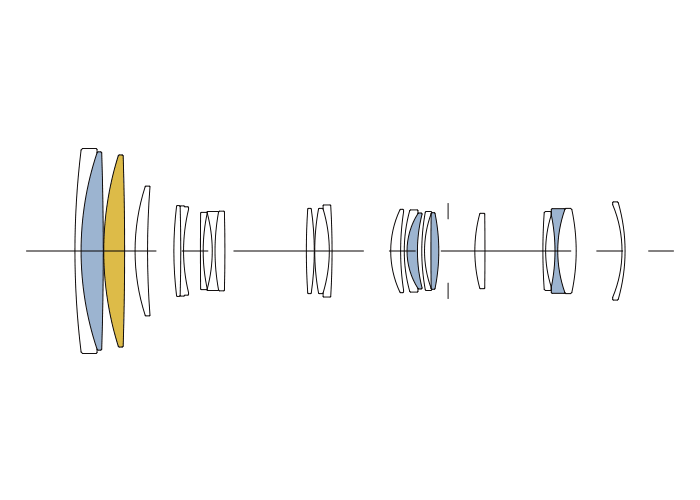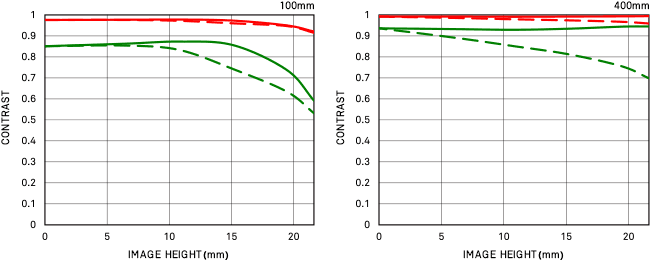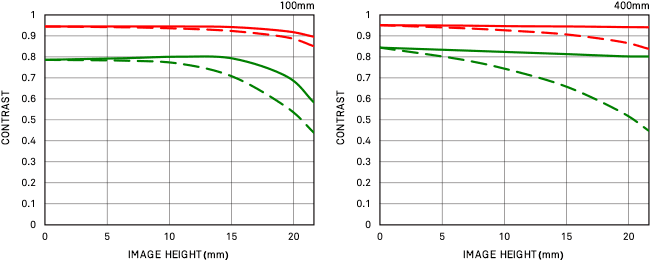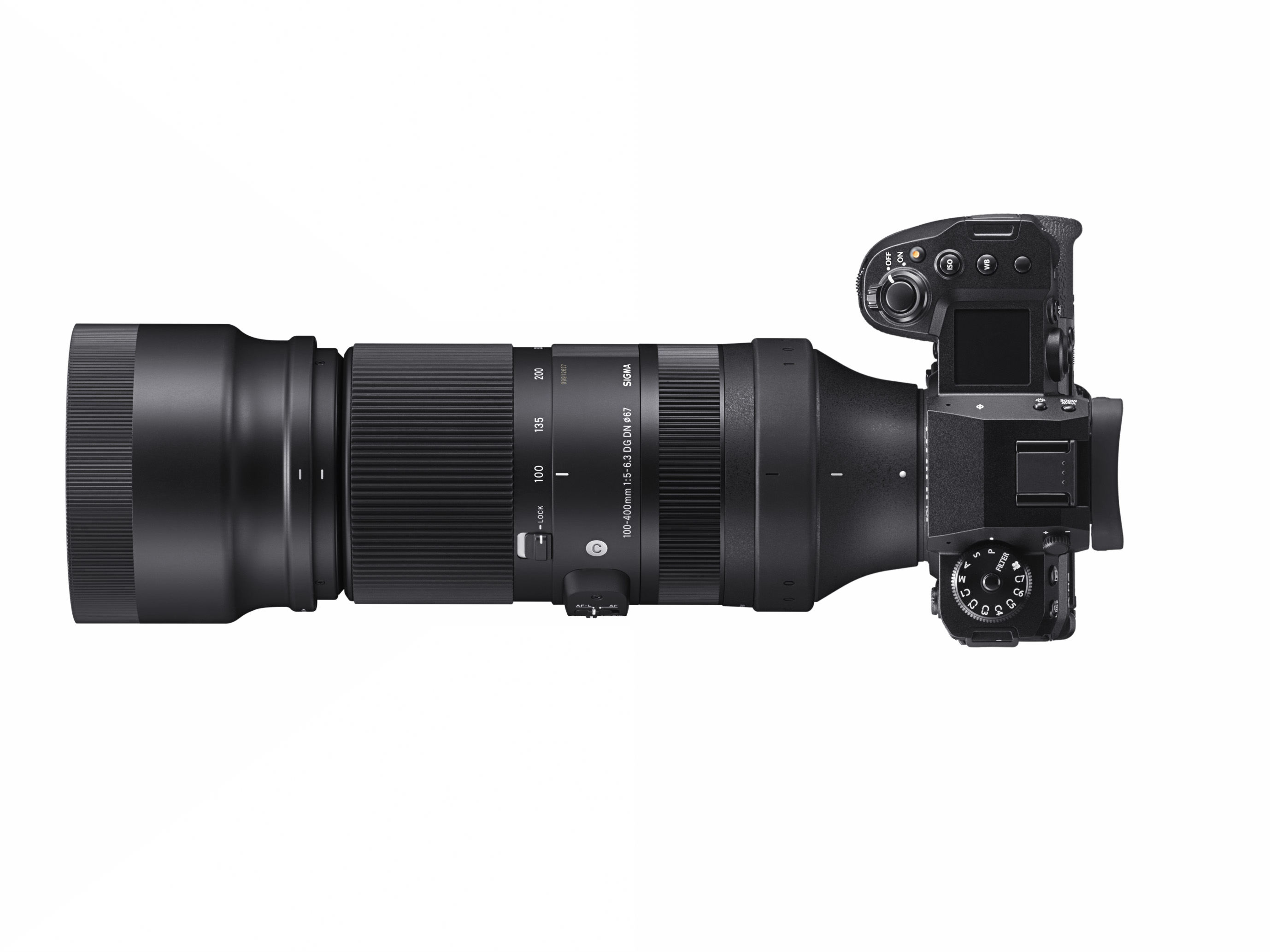100-400mm F5-6.3 DG DN OS | C

Best Ultra-Telephoto Zoom Lens - TIPA World Awards 2021
• SIGMA's 5th DG DN lens, designed exclusively for full-frame mirrorless cameras
• Uncompromising image quality
• A full range of functionalities that enables smooth and easy ultra-telephoto shooting
• Lightweight & Compact lens body
| Product Lines | Contemporary | |
|---|---|---|
| Youtube Videos | ||
| Instagram Widget | ||
| Klevu Image | /c/0/c020_100_400_5_63_basic_01.png | |
| Construction | 22 Elements in 16 Groups | |
| Lens Type | Telephoto | |
| Sensor Size | Full Frame | |
| Angle of view | 24.4° - 6.2° | |
| Number of diaphragm blades | 9 (Rounded Diaphragm) | |
| Minimum aperture | F22-29 | |
| Minimum focusing distance | 112 (W) - 160 (T) cm | |
| Maximum magnification ratio | 1:4.1 (400mm) | |
| Dimensions (diameter x length) | Sony E-mount ⌀ 86.0 mm x 199.2 mm |
|
| Filter diameter | 67mm | |
| Edition number | C020 | |
| Accessories | Lens hood LH770-05 (supplied), Tripod socket TS-111 kit (not supplied) | |
| EAN | Sony E-mount |
|
Lens Construction


Geometrical MTF Chart


Diffraction MTF Chart


High-precision, rugged brass bayonet mount
The brass mount combines high precision with rugged construction. Its treated surfaces and enhanced strength contribute to the exceptional durability of the lens.
Mount with Dust and Splash Resistant Structure
Mount with Dust and Splash Resistant Structure
Rounded diaphragm
The polygonal shape of a conventional iris dia phragm causes out-of-focus light points to appear polygonal. A rounded diaphragm is designed to pro duce rounded out-of-focus light points when opened to near maximum aperture. This creates attractive bokeh effects in many situations, such as when pho tographing a subject against an out-of-focus surface of water from which light is being reflected.
Intelligent OS
Intelligent OS is an algorithm specially designed for panning shots. It enables effective image stabilization even when the camera is moved vertically or diagonally, regardless of the horizontal and vertical orientation. This feature is available on all of SIGMA's telephoto lenses that have OS switches 1 and 2, with the exception of the SIGMA 120-300mm F2.8 DG OS HSM | Sports.
Exclusive low-dispersion glass
The degree to which light is refracted by glass depends on the light's wavelength. This fact causes different colors of light to focus at slightly different points. The result is chromatic aberration, the color fringing that is particularly noticeable in telephoto lenses. Most chromatic aberration can be removed by combining a high-refractivity convex lens element with a low-refractivity concave element. Yet residual chromatic aberration known as "secondary spectrum" may still remain. To minimize this secondary spectrum, which can be a serious issue with conventional lenses, SIGMA lenses feature up to three types of exclusive low-dispersion glass offering superior performance: ELD (Extraordinary Low Dispersion), SLD (Special Low Dispersion) and FLD ("F" Low Dispersion). In particular, FLD glass offers ultra-low dispersion in combination with high transmittance and the anomalous dispersion characteristics of fluorite. Meticulous deployment of these types of exclusive low-dispersion glass and optimization of power distribution gives SIGMA lenses superlative image rendition undiminished by residual chromatic aberration.

